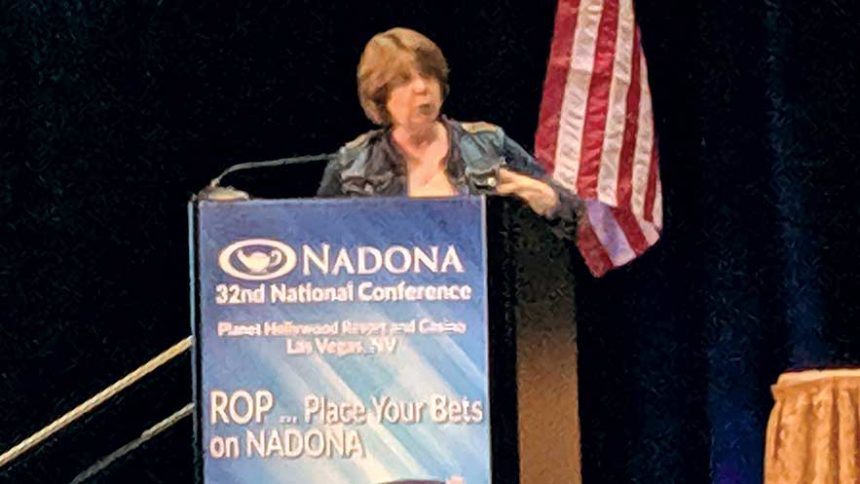
Surveillance is the most essential component of an infection prevention program, a nurse trainer said Tuesday.
Long-term care facilities need both clinical and surveillance criteria, but surveillance criteria is designed to look at a population at risk. Two surveillance questions for nurse managers to ask are: “Is infection present?” and “Is it a healthcare-acquired infection or community-acquired infection?” explained Candi Shearen RN-BC, IP-BC, CIC, during the NADONA annual conference in Las Vegas. Shearen, the director of education and infection prevention at Legacy Healthcare-West Division, is also a NADONA Master Trainer.
Nurse leaders focused on surveillance, “have to be out there looking all day long. You’re not a silo, you have to be a team,” she said. Shearen also advised the “gum shoe” method of “walking around and talking to people.”
“Don’t forget your housekeepers,” who often know all sorts of tidbits, she noted. “Take the opportunity to educate anyone who is not doing the right thing.”
Infection control and antibiotic stewardship also tied into a Monday presentation on sepsis from Northwestern University associate professor and Centers for Disease Control and Prevention medical officer Theresa A. Rowe, D.O.
“Antibiotic stewardship is a set of commitments and actions designed to optimize the treatment of infections while reducing the adverse events,” she said.
Still, “we can’t prevent all infections,” she said. “The overarching goal is that early identification is key, and that there is a structured communication of change in condition.”
Additionally, healthcare worker vaccinations are a major component in infection prevention in nursing homes, Rowe said, which was echoed Tuesday by Ruth M. Carrico, Ph.D., DNP, APRN, Associate Professor at the University of Louisville School of Medicine, Division of Infectious Diseases.
With regards to flu vaccines, administrators and directors of nursing must be thinking about “your patients and residents, and your healthcare workers.”
“We have people who are anti-vaccines,” Carrico said. “They are afraid the flu vaccine is going to hurt them or they believe the flu vaccine won’t help them.”
While she makes vaccines a condition of employment, Carrico compared the encouraging nursing home staff to have immunizations as an ongoing conversation.
“Just like if we have a patient who smokes and we talk about smoking cessation, we talk about it with every encounter,” she said. She criticized those who wear masks as an alternative.
“Please make sure you know a mask does not present influenza transmission. It’s like wearing a big Scarlet A,” she said. “The masks are designed for the wearer as a barrier. It is not a containment device.”
The goal of vaccines is to “immunize the herd,” she reminded.
“The more people around us that we vaccinate the less opportunity there is for those viruses to work and challenge those of us who did not have a complete response, or those who were not vaccinated at all,” she said.
NADONA continues through Wednesday at Planet Hollywood.




